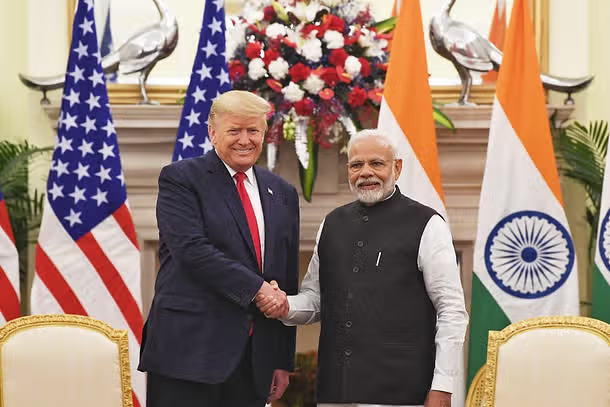
In recent years, the relationship between the United States of America and India has grown into one of the most significant and dynamic partnerships of the 21st century. Rooted in shared democratic values, mutual economic interests, and strategic geopolitical goals, the bond between these two nations has deepened across multiple domains, including defense, trade, technology, and cultural exchange. This article explores the key pillars of the U.S.-India relationship and the factors driving their growing collaboration.
Historical Context: From Estrangement to Engagement
The relationship between America and India has not always been smooth. During the Cold War, India’s non-aligned stance and its close ties with the Soviet Union created a sense of distance from the U.S. However, the end of the Cold War and India’s economic liberalization in the 1990s marked a turning point. Since then, the two nations have steadily built a partnership based on shared interests and values.
The 21st century has seen a dramatic transformation in bilateral ties. The U.S.-India Civil Nuclear Agreement in 2008 was a landmark moment, symbolizing a new era of trust and cooperation. Today, the relationship is characterized by high-level diplomatic engagement, with regular summits and dialogues between leaders of both nations.
Strategic and Defense Cooperation
One of the most critical aspects of the U.S.-India partnership is their growing defense and strategic collaboration. As two of the world’s largest democracies, both nations share concerns about regional stability, particularly in the Indo-Pacific region, where China’s rising influence poses challenges.
The U.S. has become one of India’s top defense suppliers, providing advanced military equipment such as fighter jets, transport aircraft, and naval vessels. Joint military exercises, such as the annual Malabar naval drills, underscore the deepening defense ties. Additionally, the Quadrilateral Security Dialogue (Quad), which includes the U.S., India, Japan, and Australia, has emerged as a key platform for promoting a free and open Indo-Pacific.
Economic Ties: A Pillar of Mutual Growth
Economic cooperation is another cornerstone of the U.S.-India relationship. Bilateral trade between the two nations has surged, reaching over $150 billion in recent years. The U.S. is India’s largest trading partner, while India is among the top 10 trading partners for the U.S.
Key sectors driving this economic partnership include information technology, pharmaceuticals, energy, and manufacturing. Indian IT companies have a significant presence in the U.S., contributing to job creation and innovation. Meanwhile, American companies like Amazon, Google, and Microsoft have made substantial investments in India, leveraging its vast market and skilled workforce.
The two nations are also collaborating on critical global issues such as climate change and clean energy. Initiatives like the U.S.-India Climate and Clean Energy Agenda 2030 Partnership aim to accelerate the transition to renewable energy and reduce carbon emissions.
Technology and Innovation: A Shared Vision
The U.S. and India are natural partners in the realm of technology and innovation. Both nations are leaders in the digital economy, with thriving tech industries and a shared commitment to advancing cutting-edge technologies such as artificial intelligence, quantum computing, and 5G.
Collaboration in space exploration is another area of growing interest. NASA and the Indian Space Research Organisation (ISRO) have partnered on missions like the NASA-ISRO Synthetic Aperture Radar (NISAR) project, which aims to study Earth’s ecosystems and natural hazards.
Cultural and People-to-People Ties
The bond between America and India is also strengthened by robust cultural and people-to-people connections. The Indian diaspora in the U.S., numbering over 4 million, plays a vital role in fostering understanding and collaboration between the two nations. Indian-Americans have made significant contributions to various fields, including technology, medicine, academia, and politics.
Cultural exchanges, educational partnerships, and tourism further enrich the relationship. Thousands of Indian students study in American universities, while American interest in Indian culture, yoga, and cuisine continues to grow.
Challenges and the Way Forward
Despite the remarkable progress, the U.S.-India relationship is not without challenges. Differences over trade policies, intellectual property rights, and India’s reliance on Russian military equipment have occasionally strained ties. However, both nations have demonstrated a commitment to addressing these issues through dialogue and mutual understanding.
Looking ahead, the U.S.-India partnership is poised to play a pivotal role in shaping the global order. As the world grapples with complex challenges such as climate change, pandemics, and geopolitical tensions, the collaboration between these two democracies will be crucial in driving solutions and ensuring stability.
Conclusion
The bond between America and India is a testament to the power of shared values and common goals. From defense and trade to technology and culture, the partnership has evolved into a multifaceted alliance that benefits both nations and the world at large. As they continue to deepen their ties, the U.S. and India are not only strengthening their bilateral relationship but also contributing to a more prosperous and secure global future.